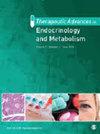The impact of socioeconomic factors, social determinants, and ethnicity on the utilization of glucose sensor technology among persons with diabetes mellitus: a narrative review
IF 4.6
3区 医学
Q2 ENDOCRINOLOGY & METABOLISM
Therapeutic Advances in Endocrinology and Metabolism
Pub Date : 2024-03-11
DOI:10.1177/20420188241236289
引用次数: 0
Abstract
Continuous glucose monitoring (CGM) usage has been shown to improve disease outcomes in people living with diabetes by facilitating better glycemic management. However, previous research has suggested that access to these devices can be influenced by nonmedical factors such as socioeconomic status and ethnicity. It is critical that equitable access to CGM devices is ensured as people from those groups experience poorer diabetes-related health outcomes. In this narrative review, we provide an overview of the various healthcare systems worldwide and how socioeconomic status, social context, and ethnicity shape device usage and the associated health outcomes. In general, we found that having a lower socioeconomic status and belonging to an ethnic minority group negatively impact CGM usage. While financial means proved to be an important mediator in this process, it was not the sole driver as disparities persisted even after adjustment for factors such as income and insurance status. Recommendations to increase CGM usage for people of a lower socioeconomic status and ethnic minorities include increasing the availability of financial, administrative, and educational support, for both patients and healthcare providers. However, recommendations will vary due to local country-specific circumstances, such as reimbursement criteria and healthcare ecosystems.社会经济因素、社会决定因素和种族对糖尿病患者使用葡萄糖传感器技术的影响:叙述性综述
使用连续血糖监测仪(CGM)有助于更好地管理血糖,从而改善糖尿病患者的病情。然而,以往的研究表明,这些设备的使用会受到社会经济地位和种族等非医疗因素的影响。确保 CGM 设备的公平使用至关重要,因为来自这些群体的人与糖尿病相关的健康状况较差。在这篇叙述性综述中,我们概述了全球各种医疗保健系统,以及社会经济地位、社会背景和种族如何影响设备的使用和相关的健康结果。总体而言,我们发现社会经济地位较低和属于少数族裔群体会对 CGM 的使用产生负面影响。虽然经济能力被证明是这一过程中的重要调解因素,但它并不是唯一的驱动因素,因为即使在对收入和保险状况等因素进行调整后,差异依然存在。提高社会经济地位较低人群和少数民族使用 CGM 的建议包括为患者和医疗服务提供者提供更多的财务、行政和教育支持。不过,由于各国的具体国情不同,如报销标准和医疗生态系统等,建议也会有所不同。
本文章由计算机程序翻译,如有差异,请以英文原文为准。
求助全文
约1分钟内获得全文
求助全文
来源期刊

Therapeutic Advances in Endocrinology and Metabolism
Medicine-Endocrinology, Diabetes and Metabolism
CiteScore
7.70
自引率
2.60%
发文量
42
审稿时长
8 weeks
期刊介绍:
Therapeutic Advances in Endocrinology and Metabolism delivers the highest quality peer-reviewed articles, reviews, and scholarly comment on pioneering efforts and innovative studies across all areas of endocrinology and metabolism.
 求助内容:
求助内容: 应助结果提醒方式:
应助结果提醒方式:


